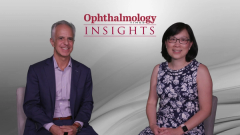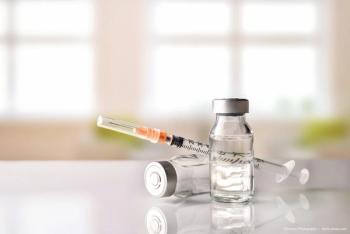
Clinical Findings for Biosimilars in the Treatment of Retinal Disorders
Carl D. Regillo, MD, and Jennifer I. Lim, MD, review clinical trial data for biosimilar products, with interpretation of safety data when comparing to the biologic reference products.
Episodes in this series

Carl D. Regillo, MD: Jenny, so far, we have 1 FDA-approved biosimilar of ranibizumab, and it’s now commercially available. Any and all of us could be using this product, and maybe some of the others coming very soon. Let’s take a deeper dive into the clinical trials.
Jennifer I. Lim, MD: We love clinical trials.
Carl D. Regillo, MD: Our fields know clinical trials, the results. Can you tell me what the clinical trials showed that led to the approval of SB11? The proof is in the pudding.
Jennifer I. Lim, MD: Absolutely. We love data, and I’m going to give it to you. In terms of the efficacy of SB11, looking at that sensitivity curve at the first 8 weeks when they compared SB11 to the reference drug, ranibizumab, the change in best corrected visual acuity was 6.2 for SB11 and 7.0 for ranibizumab, so essentially the same, no significant difference. In terms of the central subfield thickness change, which was required at 4 weeks for the European medical approval—unlike the FDA requiring the 8-week visual acuity change for approval—the difference was a decrease of 108 μm for SB11 compared to a difference of 100 μm for ranibizumab, again, no significant difference. That tells me, in terms of visual acuity and central subfield thickness change, it’s equivalent.
Carl D. Regillo, MD: That’s what we need to hear, right? Same efficacy, for sure. They also do drug-antibody testing; how did that come out? What did it show?
Jennifer I. Lim, MD: Antidrug antibodies are very important when you talk about biologics because they’re produced by E. coli cells in the process, so technically, you can develop antibodies to this. We can feel comfortable because in this study, for SB11 compared to ranibizumab, the antidrug antibodies did not significantly differ. It was 3% for SB11 and 7% for ranibizumab, so no significant difference there.
Carl D. Regillo, MD: Going back to nocebo, but on the safety side, we’re super sensitized because of some of these issues we talked about before, that some biologics have had higher rates of intraocular inflammation [IOI], and some of those were severe and even led to vision loss. The biologics and on-label drugs we’ve been using, and the reference product we’re talking about here, are squeaky clean, right? Very low rates.
Jennifer I. Lim, MD: Very squeaky clean. Yes.
Carl D. Regillo, MD: We’re talking in major clinical studies that led to the FDA approval, no more than 2% for significant intraocular inflammation. How did it turn out in this particular study for SB11?
Jennifer I. Lim, MD: It was 0.9% IOI for SB11 vs 0% for ranibizumab, so again, clean. I want to emphasize, and you brought this up, that yes, we do have that history, we can’t negate that. We have 15 years of safety data for ranibizumab, and that’s the only difference now between the biosimilar and ranibizumab, because we must wait and get that data accumulated over years.
Carl D. Regillo, MD: We have another phase 3 equivalency study of another biosimilar. It’s not quite FDA approved, but we expect that to happen sometime soon. Can you tell me about that? Does it look the same?
Jennifer I. Lim, MD: It’s looks the same. It was called the COLUMBUS-AMD study, FYB201 compared to ranibizumab, the reference drug. In terms of the visual acuity change and the central subfield change, no significant difference.
Carl D. Regillo, MD: It should be said, these are studies with identical dosing, usually monthly dosing.
Jennifer I. Lim, MD: Correct.
Carl D. Regillo, MD: On-label.
Jennifer I. Lim, MD: Head-to-head.
Carl D. Regillo, MD: Gold standard approach, head-to-head. It’s a pretty big study, although it’s only 1 equivalency phase 3 study, it’s still big. The study for SB11 was 705 patients in total for the 2 arms. Those are big studies, and that should give us a good level of confidence, right?
Jennifer I. Lim, MD: Right.
Transcript edited for clarity
Newsletter
Don’t miss out—get Ophthalmology Times updates on the latest clinical advancements and expert interviews, straight to your inbox.






















































.png)


